Ellen Wolff speaks with Mat Beck of Entity FX about raising the VFX quotient in the sixth season of Smallville.
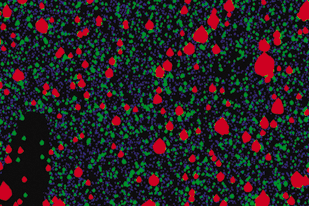
Avid Smallville fans have followed a young Clark Kent faster than a speeding raindrop grow into his Superman powers. Entity FX has grown too. All images courtesy of Warner Bros. Television.
When Smallville begins its sixth season on the CW Network this fall, the action/sci-fi series will have a large legacy to follow. For the past five seasons, avid fans have followed a young Clark Kent (played by Tom Welling) as he grows into his Superman powers. Theyve watched Clark exhibit his X-ray eyesight, his heat vision abilities (which can melt a speeding bullet) and the personal velocity to chase and catch an intercontinental ballistic missile. Then theres the perennial effect of Clark time, in which the character seems to move at normal speed while everything else appears paused around him. Added to those visual effects are environments such as Metropolis, Smallville, Kansas (meteor capitol of the world), and exotic locales such as Zod which is why the digital pipeline at Entity FX has kept humming along.
Entity FX has had a core of about 30 people working on Smallville during the past four seasons, and the team is led by president and vfx supervisor Mat Beck, vfx producer Trent Smith, on-set supervisor John Wash and exec vfx producer Kymber Lim. Entity FX has received a Visual Effects Society Nomination for its work in Smallville, and won a 2004 VES Award for one episodes frozen rain effects sequence.
Beck, who was an Emmy nominee for the effects in HBOs Band of Brothers, also worked for several years on the landmark sci-fi series, X-Files. He has a host of movie credits as well, including Spider-Man 2, The Aviator, The Nutty Professor, Galaxy Quest and Michael Manns feature version of Miami Vice. Beck spoke to VFXWorld from Entitys studio in Santa Monica, California.
Ellen Wolff: Last years season opener of Smallville reportedly had 100 effects shots in that episode alone. Will the sixth season opener match or exceed that?
Mat Beck: I dont know for sure. Until airtime, the exact shot count is subject to huge variations. For example, in a scene where Clark is in a kind of limbo state, it might have been filmed in a way that production wound up not liking how it looked. So theyll ask, Can you take these 22 shots and help us out? And we will. When it comes to the season opener, of course, we make a huge effort to start off with a bang, and hopefully bangs will ensue!
EW: Since you work on several episodes at a time, can you look ahead to advise production on how many effects shots are reasonable to attempt for a given episode?
MB: We do. But the shot lists are continuously modified as the scripts evolve. Usually, the shot lists start small, then grow enormously and then get cut back in response to budget concerns. We go into production with a list of shots we will do, and then when we come out of production into post-production we find out what were really going to do.
EW: What is your typical give-and-take with production?
MB: The plates get shot in Vancouver. (The downtown buildings of that British Columbia city often stand in for the skyscrapers of Metropolis.) The film is shot, developed and scanned up there. As a way of recording information, film has a very high bandwidth thats still pretty good. [Director] James Marshall and [exec producer] Ken Horton do an amazing job shooting this stuff and putting it together.
The scanned footage is sent electronically to editorial right away. Relatively soon after that, HD Cam tapes are sent to us. For certain effects shots, we ask for HD Cam SR to get the extra bandwidth. Its not exactly Fed-Ex, but thats how the stuff arrives. Were exploring the idea of a network link between Vancouver and Entity, conceivably during this season.
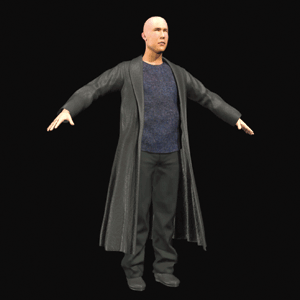
The series is shot, developed and scanned in Vancouver. Entity has a hand-held scanner it takes on set. Were pretty much polymorphic sluts well use whatever works.
EW: If youre working in HD, you dont have the timesaving benefits of working at TVs traditionally lower resolution?
MB: No, that horse left the barn a long time ago. Smallville was HD from the second season onward, and weve been doing HD for a long time. One of the things that we liked about doing HD transfers on standard def shows was that wed have the ability to move certain elements around in the frame, or blow them up. Then, of course, shows went to HD and we lost that little cushion.
EW: You utilize a considerable amount of greenscreen effects for Smallville. Are the greenscreen shoots done in Vancouver as well?
MB: Yes. We have at least one guy there all the time taking care of things. John Wash is our on-set supervisor and he knows both the show and visual effects. Its a great comfort to have someone whos as experienced as he is.
EW: So youre confident youll get plates you can actually work with.
MB: Yeah, what a concept! Thats not to say that we dont have to rebuild some things in major ways. One of the reasons we like this show is that we get to collaborate creatively in terms of how to set the pace, and give our effects shots more impact in telling the story. These episodes tend to get consistently better all the way through the process.
EW: Are most of Clarks superpower effects are done with greenscreen elements?
MB: Greenscreen and avatar. We scan almost every principal in the show, so we can produce an avatar as needed. We can have a character thats CG, or starts out CG and morphs into a greenscreen character. Or we can track a CG character so that he appears to have a reflection, or casts a shadow on something that wasnt there when he was shot. A lot depends on how artfully an avatar is done, because under certain circumstances I think that you can still see the difference.
EW: How close can the camera get to Clark Kents avatar and still have it look convincing?
MB: Tom Welling (who plays Clark) is a professional, and we can get a lot of good footage of him doing his thing. So we havent had to have his avatar come right up to camera. How close we can get depends on how fast hes moving. It wont matter if hes going 120 mph!
EW: What do you use for cyberscanning your actors?
MB: We have a hand-held scanner that we take on set. Were pretty much polymorphic sluts well use whatever works.
EW: Do you ever use motion capture to generate CG characters?
MB: We have worked with MoCap data from House of Moves in the past. But weve not done motion capture yet on Smallville. We intend to do more exploration of that particular technology because it continues to mature.
EW: Does Smallville require you to create many invisible effects?
MB: We do have effects where well remove somebody from a scene and replace him with somebody else. Or we create a split screen to insert a better performance.
EW: That sounds like the kind of stuff George Lucas does, which many people chalk up to his perfectionism.
MB: Thats right. Speaking of Lucas, theres something else that hes done for a long time that we do a lot of too on Smallville, which is previsualization.
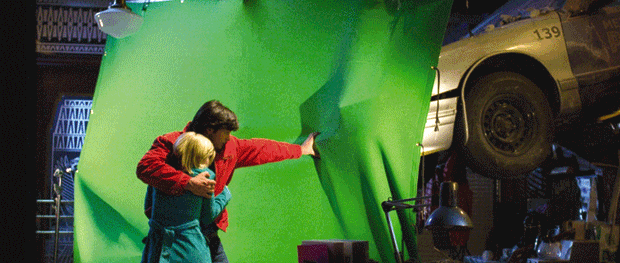
Its important that Entity has effects that sell the jeopardy or the environment that the characters are in.
EW: What tool do you use for that?
MB: We use Maya. If youre a director whos just trying to do some rough previs, you can use software thats easier to use. But from our point of view, when we use Maya the results are dimensionally accurate. We can say: This is what we need to build. And heres where the camera goes, and it has a 17mm lens and its two feet off the ground. Also, in certain cases previs gives us a heads-up for building a CG environment.
Ive been doing more directing on this show, and it wont come as a surprise that some of the sequences Ive directed have been heavily prevised!
EW: So you dont shoot anything that you wont need.
MB: Thats kind of what happens. We have a scene where Clark has to catch a missile thats being launched. He runs and jumps up and just barely catches it and climbs onto it. All that was shot in one day, because we just shot what we needed and no more.
On the other hand, to the extent that the effects are completely under control, they risk being boring. You need enough room on set having gotten what you needed to try things that produce happy accidents. My cliché is that you need to have a really good plan worked out so you have something to throw out the window if you need to!
Were always looking for ingenious ways to push the envelope and not break the bank. It really doesnt matter if its a TV show or a film. What makes TV especially challenging is the time factor. Usually time is a greater limiting factor than money.
EW: Since youve done so many episodes of Smallville, do you benefit from any economies of scale?
MB: We do benefit from previous work in a number of ways. One is the re-use of elements, like pieces of models. But it isnt alright, were going to do all the Fortress of Solitude shots for this show as well as for the episode two shows from now on. Because that would be actually a false economy. We really need to be working within the rhythm of the show thats rounding into completion.
EW: How have improvements in CG affected your production process?
MB: Every year we get more processors, and those processors get more powerful. The software also gets more powerful so we can do more with it.
EW: What is your primary operating environment?
MB: Right now, its mostly Maya on Linux. Our technical people like Linux, but we believe in giving an artist the environment in which he or she can flourish. So we do have some Windows machines.
For compositing we use 3ds Max. We also use Inferno and Flame, and After Effects. Were going to be trying out Digital Fusion and perhaps some other packages as well. Every program we run goes out to a render farm, so that we can maximize the power of an artist.
EW: Do you do multi-pass renders?
MB: Yes, were fans of multi-pass rendering, and the new versions of Maya are better at that. Some of the powers of those extra passes are that you can do quasi-3D. We do a lot of 2-1/2D.
For example, in a scene I directed where Clark catches up to a jet plane, we had reflection passes and motion vector passes so that we could do our motion blur in 2D rather than in 3D. Its a lot less expensive, so we do that all the time.
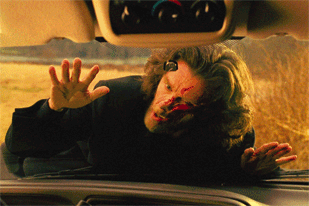
Entity is always looking for ingenious ways to push the envelope and not break the bank. Usually time is a greater limiting factor than money.
EW: Have all these off-the-shelf tools reduced Entitys need for a sizable technical staff?
MB: Yes and no. I have more technical people working for me than I would have thought. Weve got a 2D render farm and 3D render farm and a Flame render farm. Weve got fast servers and ways to link them. It takes a lot to keep all these things talking to each other, and shoot around data at the rate thats needed.
EW: As the speed of CG production improves, do you find that TV clients expect more interactivity? Many of them come from a video post tradition where theyre used to sitting in a bay, exploring different iterations. Do faster digital effects provide any comfort factor for them?
MB: I think so. The systems are getting more and more powerful, but theres still an interesting mix of two cultures. Film definitely benefits from getting a little bit of that lets look at it quickly attitude from TV, and TV benefits from the exactitude that film requires.
EW: You were once quoted as saying that TV effects assignments arent epic poems theyre sonnets.
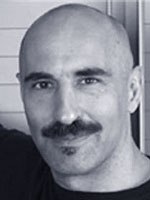
Entity president and vfx supervisor Mat Beck believes that TV effects assignments arent epic poems theyre sonnets.
MB: Yeah. Wasnt it Abraham Lincoln who said, If Id had more time, I could have written you a shorter letter. Brevity is the soul of wit and also the soul of drama in some cases. Its not the shortness of the process because two TV episodes can be longer than some movies. So under that kind of compression you sometimes get work thats better because theres not time for overcooking.
EW: Do you think about fans expectations that Clark Kent will have even greater superpowers this season? Will you need to do more and more difficult visual effects?
MB: Judging by past performance, the answer is yes. We started out doing a super-speed effect where Clark runs from here to there. Or an X-ray effect or a heat-vision effect those were relatively straightforward things. But now weve reached the point of doing CG versions of Clark, and CG natural phenomena and CG environments sometimes entire planets.
But its not just a matter of creating more sophisticated effects. Theres a cliché that everybody utters but it really is true were here to help tell a story, and put characters in situations where you care what happens to them. So its important that we have effects that sell the jeopardy or the environment that the characters are in.
EW: As it was when you worked on X-Files, Smallville has attracted a devoted fan base.
Beck: Yes, Ive met some of them. Its both gratifying and a little scary to know how many people are watching, and how closely theyre watching! My motto is: The fans are out there.
Ellen Wolff is a southern California-based writer whose articles have appeared in publications such as Daily Variety, Millimeter, Animation Magazine, Video Systems and the website CreativePlanet.com. Her areas of special interest are computer animation and digital visual effects.







